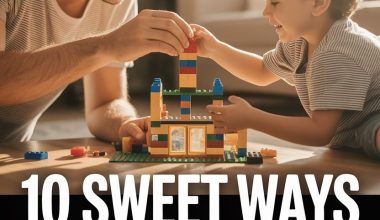Ever wondered how Scandinavian parents seem so calm while their kids are busy scaling furniture, braving playground drizzle, or inventing new uses for mud?
There’s one surprisingly simple secret that Swedish, Norwegian, and Danish mums have quietly championed for generations—a trick that might seem counterintuitive, but could just turn your chaotic evenings into moments of bliss (or at least keep you sane until bedtime).
The Secret Ingredient Is… Outdoor Naps
Yes, you read that right. In Scandinavia, parents don’t just let their babies nap outside—they genuinely swear by it.
Snow falling? Rain drizzling? Sun shining? Tiny, bundled babies snooze in their prams, safely parked on balconies, porches, or even the communal footpath.
This is less a quirky tradition and more a matter of national pride, with decades of anecdotal parenting wins and an ever-growing pile of research to back it up.
Sounds bonkers, right? But before you start imagining frostbitten toes and little ones blown about like dandelion fluff, let’s unpack why this time-honoured trick works—and how you can try it, wherever you live.
Why Fresh Air Naps Are A Scandinavian Staple
The concept isn’t just an old wives’ tale from the land of the midnight sun. Studies, including one from the University of Oulu in Finland, show that babies who nap outdoors sleep longer and possibly more soundly than those who nap indoors.
Parents report babies napping up to 1-2 hours longer outside. That’s a cup of tea you might actually finish.
But it’s not just about glorious, uninterrupted sleep (though, honestly, isn’t that motivation enough?). Outdoor naps may help regulate babies’ circadian rhythms, which means better nighttime sleep.
Exposure to daylight—even filtered through cloud or snow—helps set the body’s internal clock, making it easier for tiny ones to distinguish day from night.
Let’s not forget the immune system. Scandinavian parents believe that fresh, chilly air helps toughen up their children, making them less prone to colds and bugs.
While that’s a bit more contentious, some research suggests that outdoor air might lower the risk of respiratory infections by reducing exposure to germs and improving air quality, especially compared to stuffy, heated rooms.
How Scandinavian Parents Make It Work—Year Round
Napping outside in January might sound like a recipe for shivers and social services, but the trick is in the prep. Scandinavian mums are pros at bundling.
Babies are layered in all-natural fabrics—think merino wool onesies, down-filled pram suits, and hand-knitted hats pulled snugly over ears.
Prams are kitted out with sheepskin liners, wind covers, and cozy blankets. Only the tip of a pink nose peeks out, while the rest of the baby is cocooned in warmth.
Worried about extremes? There are rules. Outdoor naps don’t happen when temperatures dip below -10°C (14°F) or soar above a comfortable 21°C (70°F). Wind, sleet, or heavy rain? That’s a no as well.
Parents check on their babies frequently, and many use baby monitors with outdoor range.
The real secret sauce isn’t just the gear—it’s the confidence to let babies experience nature, even in small doses.
And yes, sometimes that means a nap in a buggy on a balcony while mum enjoys five minutes with a biscuit and a magazine. Bliss.
Getting Started With Your Own Outdoor Napping Adventure
No need to move to Oslo or invest in a designer pram. Here’s what you’ll need:
- A safe, sheltered spot: Think balcony, back garden, porch, or a buggy parked near an open window.
- Layers, layers, and more layers. Wool is your friend (synthetic fabrics trap sweat, which cools baby down). Start with a vest, then a sleepsuit, a woolly jumper, and a pram suit. Don’t forget hat, mittens, and socks.
- Buggy or pram with a wind and rain cover.
- Monitor or baby video camera, if you can use one safely.
- Common sense: Never leave a baby unattended for long, and always check the temperature. A good rule of thumb: Dress baby in one more layer than you’d wear yourself.
Don’t be surprised if the first attempt feels a bit odd. You might find yourself peering anxiously out the kitchen window, clutching a mug, wondering how on earth your little one is managing out there.
Odds are, your baby will conk out within minutes and stay asleep far longer than usual.
What About The Neighbours?
If you live in Stockholm or Helsinki, nobody bats an eye at a pram on a front step. But in Manchester, Melbourne, or Miami, your neighbours might have questions.
Prepare your answers in advance: “We’re trying a Scandinavian nap—it’s supposed to make babies sleep like angels!” Bonus points if you mention the Finnish study—they love a good evidence-based chat.
For apartment dwellers, a balcony works wonders, but a quiet garden spot or even a buggy near an open door can do the trick.
In colder climates, keep outings short until you (and your baby) get the hang of it. In sweltering summers, save it for a shaded spot.
Don’t Have A Baby? Outdoor Time Still Works Wonders
Outdoor napping isn’t just for the tiniest tots. Scandinavian parents keep up the fresh air tradition well into the toddler years—and beyond.
Preschoolers play outside in all weather, bundled in “rain pants” and wellies, splashing in puddles or rolling in snow, long after their British or American counterparts have retreated indoors.
Outdoor rest time, even for older kids, helps regulate mood, burn off energy, and introduce a bit of calm into the day.
If your school-aged child is bouncing off the walls by 3 p.m., try a “Scandi break”—a snack and a story outside, whatever the weather.
Who knows? You might even fancy a nap yourself.
What If Your Child Hates It?
Every child is different. Some will drift off serenely to the sound of birdsong; others will shriek like you’ve plonked them on an iceberg.
Give it a few tries, and keep the nap routine familiar—same songs, same snuggly toy, just with added breeze.
It’s worth remembering that even a few minutes outside is a win. Fresh air before a nap helps settle most children, even if the nap itself happens inside.
If it’s a total no-go, don’t force it. The trick is supposed to make your life easier, not add to your stress levels.
The Science Behind The Snooze
Why does this work so well? A big part is temperature.
Cooler air encourages deeper, more restful sleep. (Think about how most adults sleep better in cooler rooms.) Light exposure during the day ties into melatonin production, making nighttime sleep easier.
And, perhaps most important, outdoor naps create a calm, predictable rhythm that children come to expect.
Dr. Marjo Tourula, who led the Finnish study on outdoor sleeping, points to the longer nap duration and fewer sleep disturbances outside. Parents also report better appetites and less crankiness.
While not every expert agrees that outdoor napping is a magic bullet, nearly all agree that time outdoors—napping or not—offers real developmental benefits for children.
Safety Smarts For Outdoor Nappers
Common sense rules:
- Never nap outdoors on polluted, noisy streets.
- Avoid direct sun—shade and cover are non-negotiable.
- Keep the pram away from cars, driveways, and other hazards.
- Check your baby often.
- If you see shivering, blue lips, or limpness, bring your child inside immediately.
And always trust your parental gut. No nap is worth a sick child, no matter what the Scandinavians say.
But Wait, What About Naptime Rituals?
Some parents worry that outdoor naps might disrupt their carefully constructed routines. Here’s the beauty—kids are remarkably adaptable.
Keep your naptime rituals (stories, songs, a favourite blanket) and simply take them outside. Familiarity helps little ones relax, wherever they are.
Many parents find that the gentle rhythm of the outdoors—wind rustling leaves, distant birds, the hum of distant traffic—becomes its own lullaby.
With a bit of practice, your child may start to associate outdoor air with naptime, making it even easier to settle down.
Will This Turn Me Into A Super Parent?
Possibly. At the very least, you’ll have a trick up your sleeve that’s impressed generations of Scandinavian mums.
Expect a bit of trial and error as you adapt the idea to your life, but keep your sense of humour handy. Parenting is never one-size-fits-all, after all.
Imagine telling your child’s teacher that the secret to calm afternoons is as simple as a nap in the garden. Go on, own your Scandi-mum swagger.
Sleep, Sanity, And A Bit Of Scandinavian Magic
Some parenting “secrets” involve complicated schedules, pricey gadgets, or endless online debates. This one asks only for open air, a bit of patience, and woolly socks.
Give outdoor naps a go—your baby’s sleep might surprise you, and you might just reclaim a precious half hour with your feet up.
Worst case scenario? You’ll have a new story for the group chat. Best case? You’ll wonder why you didn’t try it sooner.
And if all else fails, there’s always fika and a hot cuppa, just as the Scandinavians intended.





